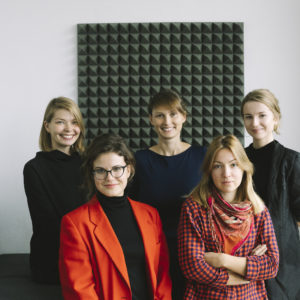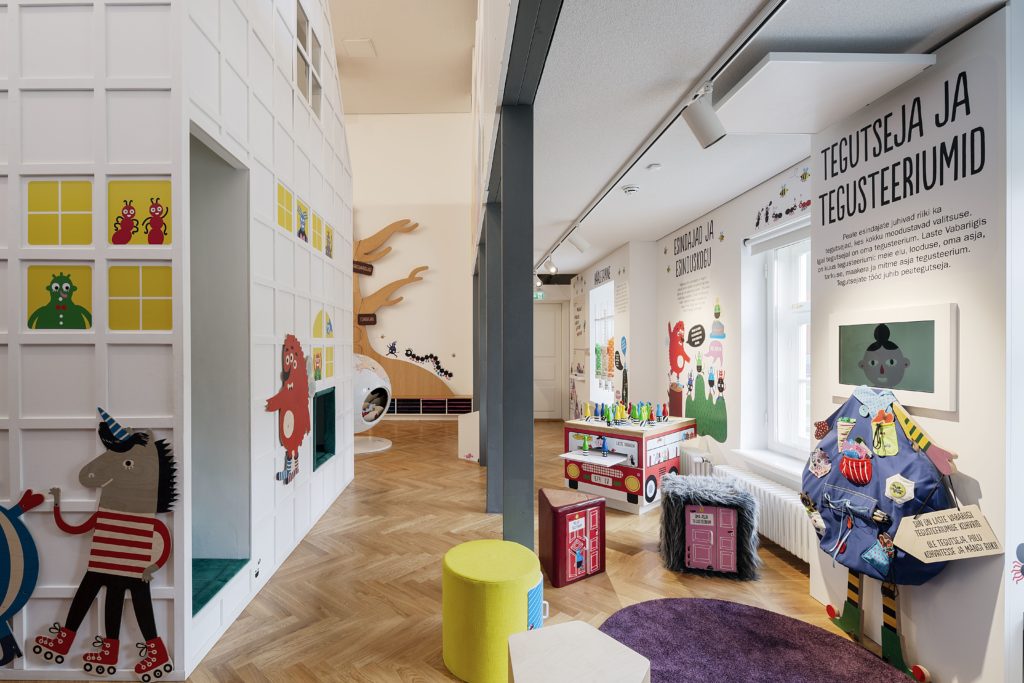AN EXCITING AND ENGAGING location for kids, and tricky subjects such as politics, governance, democracy and history had to be united under one roof. We had to prepare for various ages and languages, as well as visitors arriving alone or in a group. Besides the arrangement of objects, we also discussed topics related to children and to education, at meetings with the curators. The initiative of the little guests is important, we thought. There is no clear path which must be followed. Everything is placed at a child’s height; the children will investigate and make decisions themselves. We aimed to build a free-for-all, where the kids can climb, move and roll around and we added small corners for some alone-time.
WE USED IDEAS THAT ORIGINATED FROM our own childhoods. Kadri’s most vivid memory of space involved moving around as a small child, walking between rooms and making her way back, without having to turn around. In the Children’s Republic, you can climb around in the house in the centre, for example. The house looked even more amazing in the initial project, but the floorboards could not handle such weight. We had to cut back on the house and now there is no second floor, but it is still great and has different levels. From the outside, you observe it as a house, but once inside you no longer perceive it as such.
The important thing about the colourful characters created by illustrator Kristina Tort is that there are all kinds of people (as in society) and that they don’t mimic the most common roles.

















































































































































































































